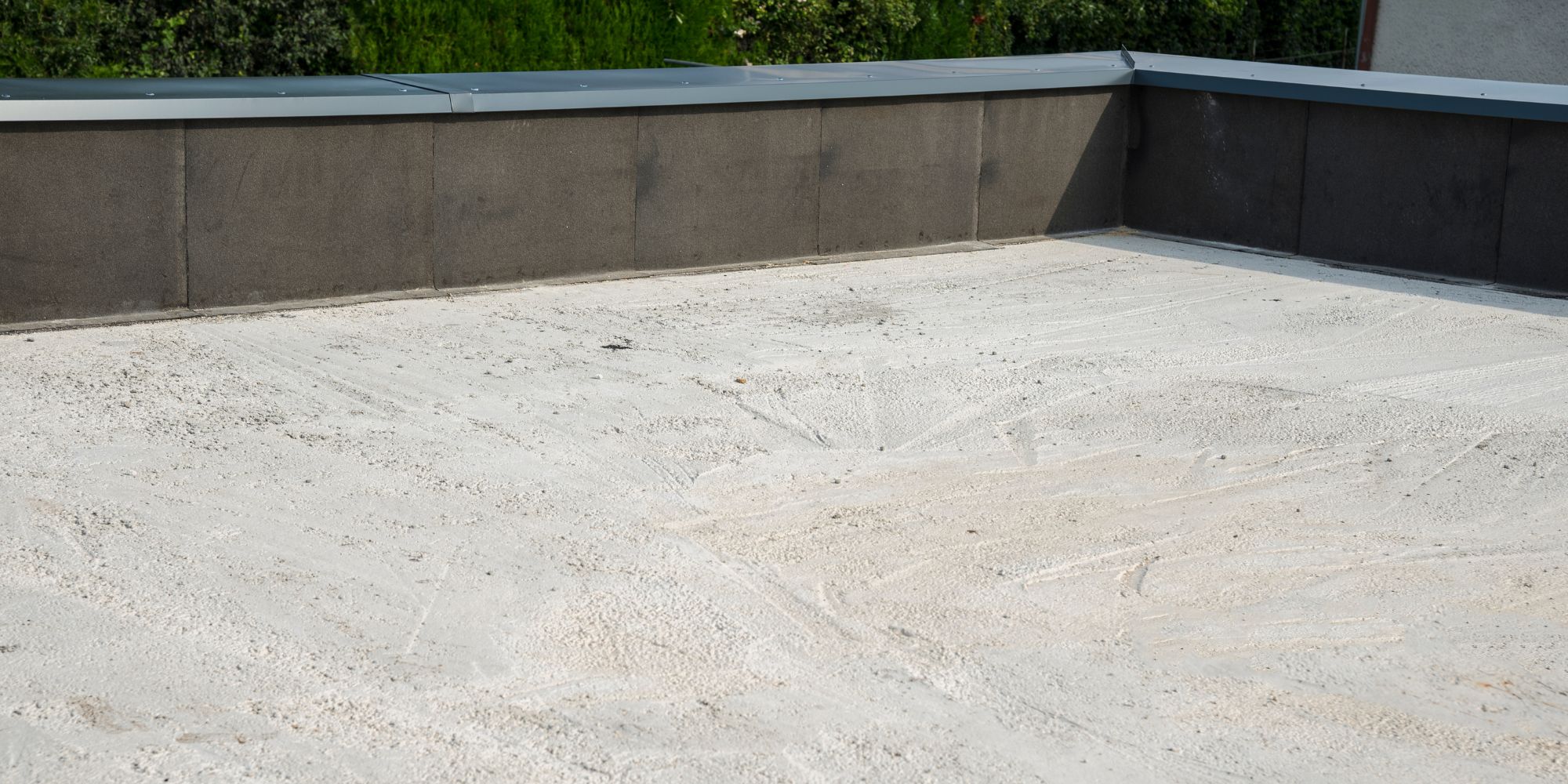Foam concrete roof insulation: Maximize efficiency

Roof insulation with foam concrete
Advantages of roof insulation with foam concrete
Foam concrete roof insulation offers a multitude of benefits that go beyond traditional methods insulation. Its unique composition provides excellent thermal insulation properties, keeping your home cool in the hot summer and warm in the cold winter months. This not only ensures year-round comfort, but also results in significant energy savings by minimizing the need for heating and cooling.
Foamed concrete has a high R value, which is a measure of its thermal resistance. This means it can effectively reduce the heat transfer between the interior and the foreign of your home. By creating a barrier against external temperature fluctuations, foam concrete roof insulation helps maintain a stable and comfortable indoor environment. Whether it's the heat of summer or the bitter cold of winter, foam concrete ensures that your home remains a haven of comfort.
In addition to thermal insulation, foam concrete also offers excellent sound insulation properties. It absorbs and reduces sound vibrations, reducing the transmission of noise from external sources such as traffic or neighbours. This is especially beneficial for homeowners who live in busy urban areas or near noisy environments. Minimizing noise pollution, foam concrete roof insulation ceiling insulation creates a peaceful and serene living space.
Unlike others insulators, foam concrete is lightweight and easy to install, making it a cost-effective choice for homeowners. Its seamless fit creates a continuous barrier against air leakage, reducing drafts and condensation. This not only improves overall energy efficiency, but also improves indoor air quality by preventing pollutants and allergens from entering.
How foam concrete roof insulation works
THE roof insulation with foam concrete is a material consisting of cement, sand, water and foam. Foam, usually created by a foaming agent mixed with water, creates air bubbles that give foamed concrete a light and porous structure. This unique composition allows foam concrete to provide excellent thermal insulation while maintaining its structural integrity.
When applied to the ceiling, the insulation from foam concrete forms a seamless layer that adheres to the surface, filling gaps and cracks. This creates a continuous barrier that prevents the transfer of heat and moisture, ensuring a comfortable and energy efficient living space. The insulating properties of foam concrete depend on the thickness of the layer applied, with thicker layers providing higher levels of insulation.
Foam concrete is also known for its ability to distribute weight evenly, reducing stress on the roof structure. This can be particularly beneficial in areas prone to seismic activity or heavy snowfall, as it helps prevent structural damage and improves overall roof durability.
Factors to consider when choosing foam concrete roof insulation
When considering the insulation foam concrete roof for home there are several factors to consider to ensure you choose the right product for your needs.
Climate: The climate in your area plays a key role in determining your home's insulation requirements. If you live in an area with extreme temperatures, such as a desert or cold climate, you may need thicker foam concrete roof insulation to provide adequate thermal protection.
Roof design: The design and pitch of your roof can affect the installation process and the amount of insulation required. A professional assessment of your roof design can help determine the optimal thickness and coverage required for effective insulation.
Budget: Consider your budget when choosing foam concrete roof insulation. While foam concrete is a cost-effective option compared to other materials, the overall cost will depend on factors such as the size of your roof and the thickness of insulation required.
Installation expertise: THE roof insulation with foam concrete requires professional installation to ensure proper coverage and effectiveness. Choose a reliable contractor experienced in installing foam concrete insulation to ensure the best results.
By considering these factors, you can make an informed decision and choose the most suitable foam concrete roof insulation for your home.
Installation Procedure for Afroconcrete Roof Insulation
Its installation process roof insulation from foam concrete roof insulation usually includes the following steps:
Surface preparation: The roof surface must be clean, dry and free of debris or loose materials. Any existing insulation or roofing materials may need to be removed to ensure proper adhesion of the foam concrete.
Primer: A primer is applied to the roof surface to enhance adhesion and ensure a strong connection between the foam concrete and the roof.
Blend and apply: Foam concrete roof insulation mix is made by combining cement, sand, water and foam. This mixture is then sprayed or poured onto the roof surface, ensuring even coverage and thickness. Professional installers use specialized equipment to achieve an even layer of foam concrete insulation.
Maturation: After application, foam concrete roof insulation needs time to harden and harden. This usually takes a few days, during which the installer can apply a protective coating to enhance strength and weather resistance.
Finish: Once the foam concrete has hardened, any necessary finishing touches can be made, such as applying a waterproofing layer or adding a reflective coating to enhance energy efficiency.
It is important to hire a professional contractor experienced in roof insulation from foam concrete roof insulation to ensure proper installation and maximum efficiency.
Maintenance and care for foam concrete roof insulation
THE roof insulation with foam concrete requires minimal maintenance to ensure its longevity and effectiveness. Here are some tips to keep your foam concrete insulation in optimal condition:
Regular checks: Periodically inspect the roof insulation and foam concrete for any signs of damage or deterioration. Look for cracks, gaps, or areas where the insulation may have peeled off. Address any problems immediately to prevent further damage and maintain insulation performance.
Cleanliness: Keep the roof surface clean to prevent the accumulation of trash, leaves or other materials that can trap moisture and undermine insulation. Remove any debris regularly using a soft-bristled brush or leaf blower.
Gutter maintenance: Make sure your gutters are clear of leaves and debris to prevent water from overflowing and seeping into the foam concrete insulation. Clean gutters regularly and consider installing gutter guards to minimize maintenance.
Professional inspections: Schedule professional inspections of your foam concrete insulation every few years to assess its condition and identify any potential problems. Professionals can spot early signs of damage and recommend necessary repairs or maintenance.
By following these maintenance tips, you can ensure the longevity and effectiveness of your foam concrete roof insulation, maximizing comfort and performance benefits.
Economical cost-effectiveness insulation roof insulation with foam concrete
One of the key advantages of foam concrete ceiling insulation is its cost-effectiveness compared to other insulating materials. While the initial cost of foam concrete insulation may be slightly higher than traditional options, its long-term benefits make it a worthwhile investment.
The energy savings achieved through foam concrete insulation can significantly reduce monthly heating and cooling costs. By minimizing the need for artificial temperature control, aerated concrete helps reduce energy bills and reduce your carbon footprint. Over time, these savings can offset the initial installation cost, making foam concrete roof insulation a cost-effective option for homeowners.
In addition, foam concrete's lightweight composition and ease of installation contribute to its economic performance. The installation process is usually faster and requires less labor compared to heavier insulation materials. This helps reduce installation costs and minimizes disruption to your home during the installation process.
In addition, the durability and longevity of foam concrete roof insulation results in long-term savings. Foam concrete is durable to vermin, fire and moisture, reducing the possibility of costly repairs or replacements. With proper maintenance, foam concrete insulation can last for several decades, providing ongoing energy savings and comfort.
When considering the cost-effectiveness of foam concrete ceiling insulation, it is important to evaluate the long-term benefits and potential energy savings in addition to the initial cost.
Conclusion: Why foam concrete roof insulation is the best choice for your home
THE roof insulation with foam concrete offers homeowners many advantages, making it an ideal choice for those looking to maximize comfort and efficiency in their homes. With the excellent thermal insulation and soundproof its properties, aerated concrete creates a comfortable and peaceful indoor environment, regardless of the external weather conditions.
The lightweight and easy-to-install nature of foam concrete makes it a cost-effective choice, providing long-term energy savings and reduced heating and cooling costs. Its resistance to fire, vermin and moisture ensures the safety and durability of your home.
By choosing foam concrete ceiling insulation, you not only create a more comfortable living space but also contribute to a more sustainable future. The energy savings achieved through foam concrete insulation help reduce your carbon footprint and protect the environment.
Investing in foam concrete roof insulation is a decision that brings immediate and long-term benefits. Enjoy a more comfortable home, lower energy bills and peace of mind knowing your home is effectively insulated with foam concrete.

Fill it in
Form